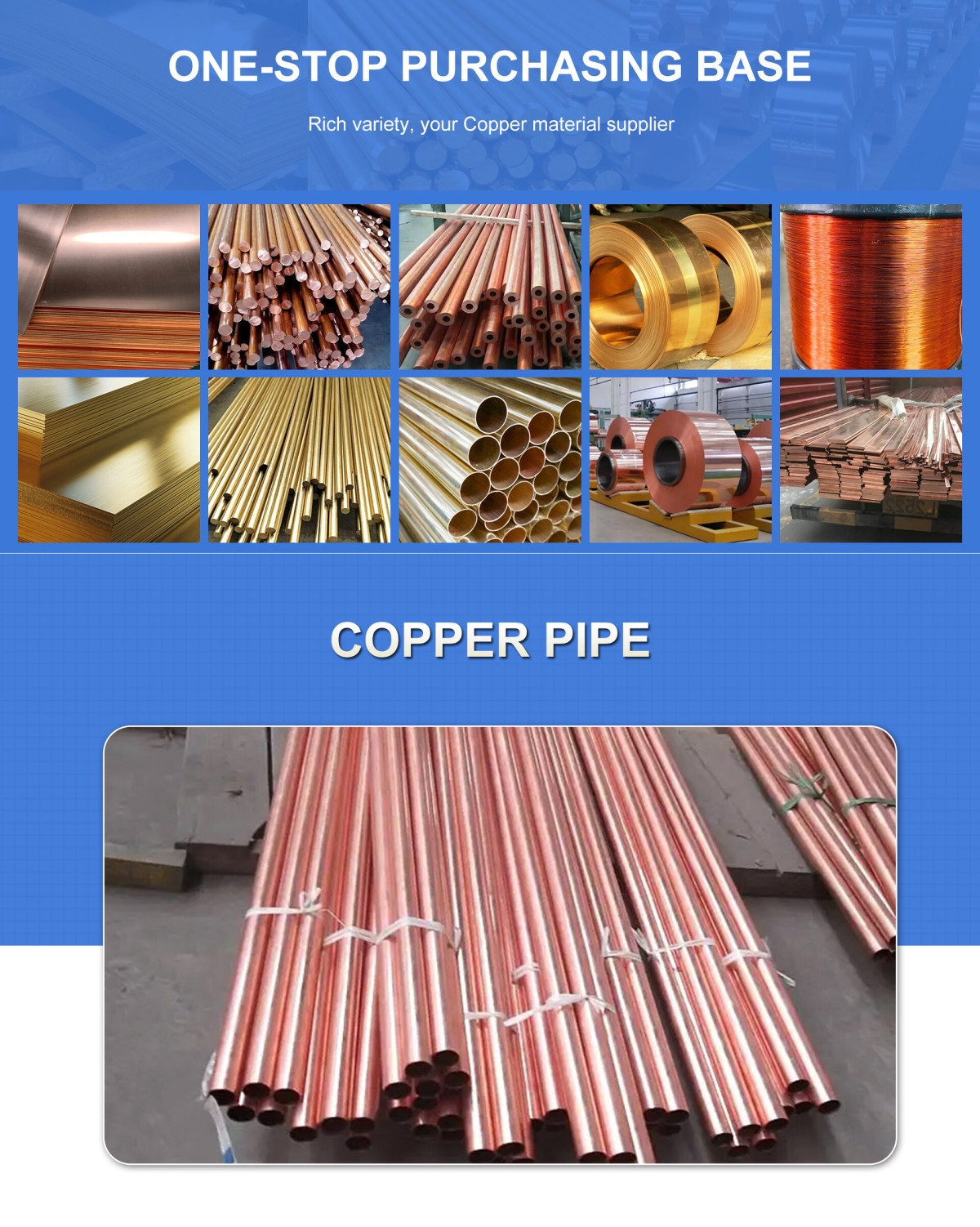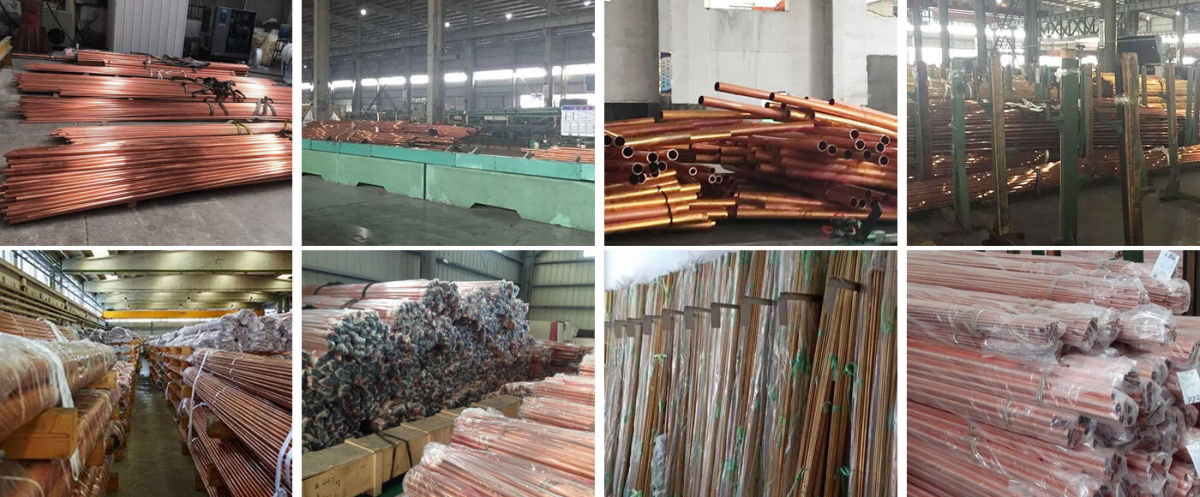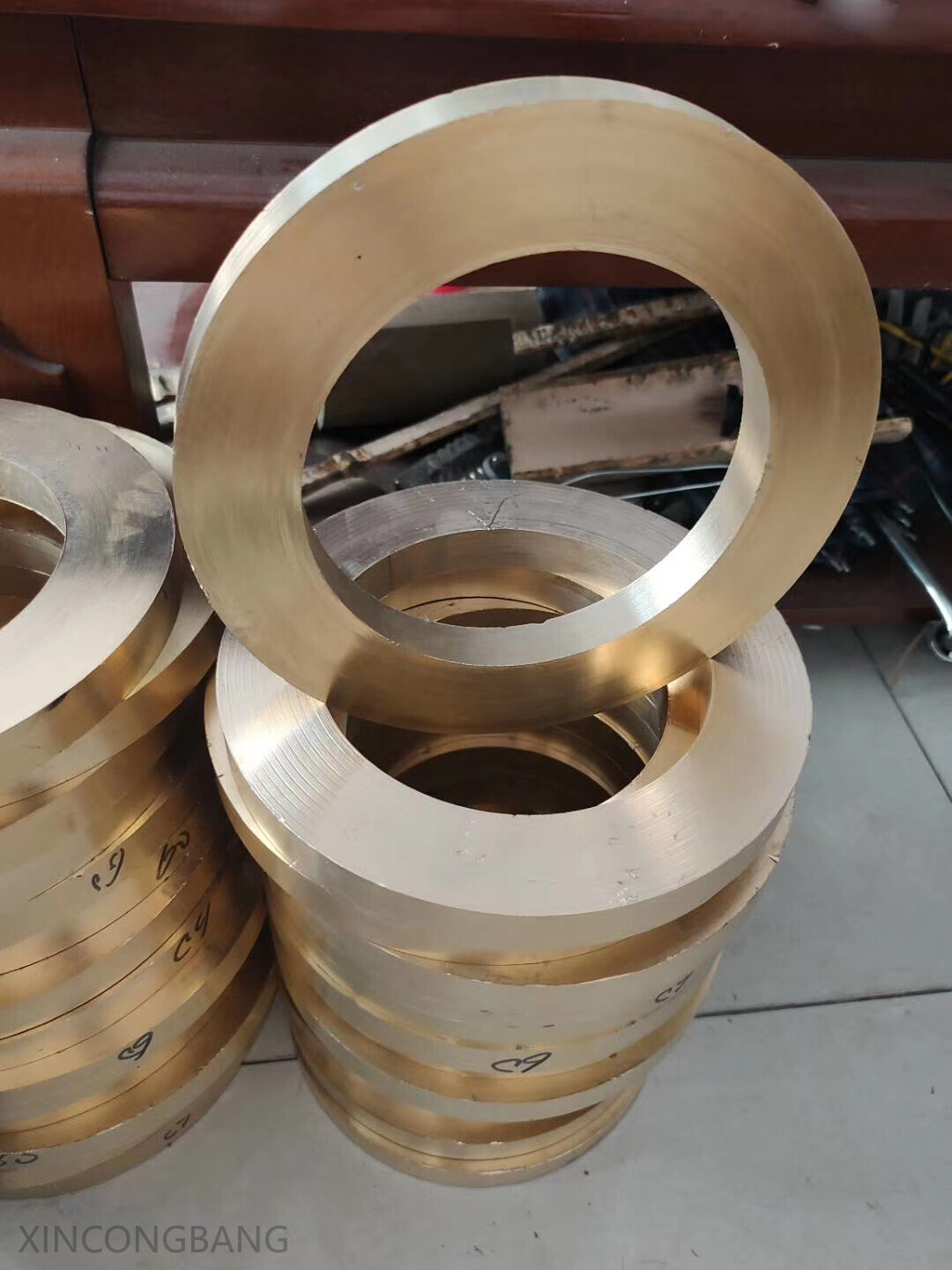
C61900 copper tubes mainly follow the following international standards, and their size ranges vary depending on the standards:
1. ASTM B150M
Applicable scope: aluminum bronze bars and profiles (including C61900).
Pipe-related extensions: Although the standard is mainly for bars, C61900 tubes can refer to ASTM B75M (universal standard for seamless copper tubes), and its size coverage:
Outer diameter: 2~914 mm
Wall thickness: 0.2~120 mm
Length: 1~12 m (customizable).
2. ASTM B75M
Core parameters:
Outer diameter range: 2~914 mm
Wall thickness range: 0.2~120 mm
Length options: 1 m, 2 m, 3 m, 6 m or customized on demand.
Applicable processes: hot working and cold drawing to ensure uniform forging structure.
3. JIS H3300
Pipe types: seamless and welded copper and copper alloy tubes.
Dimensional specifications:
Outer diameter: 6~267 mm (refer to EN 1057 for similar copper tubes).
Wall thickness: adjusted according to the outer diameter, such as the minimum wall thickness of 0.64 mm when the outer diameter is <10 mm.
4. GB/T 1527-2006
Drawn copper tube specifications:
Outer diameter ≤100 mm: length 1000~7000 mm
Outer diameter >100 mm: length 500~6000 mm
Special size: Tubes with outer diameter ≤30 mm and wall thickness <3 mm can be supplied in coils ≥6000 mm.
Standard comparison and selection suggestions
Chemical composition:
Copper (Cu): 83.6% to 88.5%, the main component of the alloy, provides good electrical and thermal conductivity.
Aluminum (Al): 8.5% to 10.0%, enhances the strength and corrosion resistance of the material.
Silver (Ag): 0.02% to 0.08%, further improves electrical conductivity and corrosion resistance.
Iron (Fe): 3.0% to 4.5%, improves the strength and hardness of the alloy.
Tin (Sn): ≤0.6%, improves wear resistance and processing performance.
Zinc (Zn): ≤0.8%, enhances toughness.
Lead (Pb): ≤0.02%, exists as an impurity and does not affect performance.
Mechanical properties:
Tensile strength: ≥585 MPa, indicating that it has high strength and is suitable for high stress environments.
Yield strength: ≥275 MPa, ensuring that the material is not prone to plastic deformation during use.
Elongation: ≥20%, indicating that the material has a certain ductility.
Fatigue strength: ≥180 MPa, suitable for high-frequency vibration or repeated load environments.
Hardness: Brinell hardness (HB) is about 170, indicating that it has high wear resistance and impact resistance.
Physical properties:
Density: about 8.79 g/cm³, close to the density of copper, but slightly lighter due to the addition of aluminum.
Thermal conductivity: about 56.5 W/m·K, with good thermal conductivity.
Melting point: lower than pure copper.
Processing performance:
C61900 aluminum bronze has excellent hot processing properties and is suitable for forging, extrusion, cold processing and other processes, which makes it perform well in the manufacture of gears, springs, bearings and other parts.

C61900 copper tube production process
The C61900 copper tube production process combines traditional copper tube manufacturing technology with the specific processing requirements of aluminum bronze alloys. Its process mainly includes the following key links:
1. Raw material preparation and alloy smelting
Raw material selection: electrolytic copper is used as the core substrate (accounting for 83.6-88.5%), and aluminum (8.5-10%), iron (3-4.5%), zinc (≤0.8%) and other elements are accurately proportioned. The content of impurities such as lead and tin (all ≤0.6%) is strictly controlled to meet ASTM B150/B150M standards.
Smelting process: Induction furnace or electric arc furnace is used to heat copper to 1100-1200℃ for melting, and alloy elements such as aluminum and iron are added simultaneously. Oxidation is reduced by inert gas protection (such as argon), and ZrO₂ ceramic filtration technology is used to improve the purity of the melt and ensure uniform alloy composition.
2. Casting and forming
Horizontal continuous casting: The molten alloy is formed into a tube billet through a horizontal continuous casting machine, and the cooling rate is controlled to refine the grain structure and reduce shrinkage and segregation.
Hot rolling and planetary rolling: The tube billet is initially formed by multiple hot rolling (temperature 800-900℃), and then the planetary rolling mill is used for efficient diameter reduction to achieve wall thickness uniformity (tolerance ±0.02mm). The rolling pressure and temperature need to be precisely controlled at this stage to avoid surface cracks.
3. Cold working and finishing
Drawing process: The tube diameter is further reduced by cold drawing, and the friction coefficient is reduced by emulsion lubrication. Combined with intermediate annealing (650-750℃), work hardening is eliminated and ductility is improved.
Internal thread processing: The internal thread structure is formed by spinning or rolling technology to enhance the heat exchange efficiency, which is suitable for scenarios such as nuclear power steam generator heat transfer tubes.
4. Heat treatment and surface treatment
Continuous annealing: Recrystallization annealing is carried out in a protective atmosphere (such as nitrogen) to eliminate residual stress and optimize mechanical properties (such as yield strength ≥ 275MPa).
Pickling and polishing: Use a mixture of nitric acid and hydrofluoric acid to remove oxide scale, and electrolytic polishing to improve surface finish (Ra ≤ 0.8μm) to meet the requirements of high-precision components.
5. Quality testing and certification
Laboratory testing: covers chemical composition analysis (spectrometer), mechanical property testing (tensile testing machine), metallographic structure observation (electron microscope) and corrosion resistance evaluation (salt spray test).
Certification system: Passed ISO 9001, ASTM B150 and nuclear industry ASME certification to ensure that the product meets drinking water (NSF/ANSI 61) and nuclear power safety standards.
Product advantages of C61900 copper tube
1. Excellent mechanical properties
High strength and wear resistance: tensile strength ≥585MPa, yield strength ≥275MPa, hardness up to 170HB, hard phase formed by aluminum element (such as κ-Al₂Cu) significantly improves wear resistance, suitable for high-load parts such as gears and bearings.
Excellent ductility: elongation ≥20%, can withstand complex cold forming processing (such as deep drawing, bending).
2. Outstanding corrosion resistance
Adaptability to marine environment: annual corrosion rate <0.02mm in 3.5% NaCl solution, Fe-Al synergistic passivation film effectively resists chloride ion corrosion, and the service life is more than 30% higher than 316L stainless steel.
Resistant to chemical media: stable to non-oxidizing acids (such as dilute sulfuric acid) and organic solvents, suitable for refinery pipelines and chemical reactor linings.
3. Thermal management and electrical conductivity
Thermal conductivity 58.6 W/m·K: better than brass (109 W/m·K) but maintains the efficient heat dissipation capacity of the copper matrix, suitable for motor windings and radiators.
Conductivity 30% IACS: meets the electrical conductivity requirements of electrical switches and contactors, while also having high strength.
4. Process compatibility and environmental protection
Welding performance: supports TIG welding and laser welding, weld strength coefficient ≥0.9, no tendency to thermal cracking.
100% recyclable: smelting and regeneration energy consumption is only 15% of the original copper, in line with the RoHS directive and green manufacturing trends.
5. Wide range of applications
Aerospace: used for gas turbine engine combustion chamber liners, resistant to 800℃ high temperature gas.
Nuclear power and energy: as a heat transfer tube for pressurized water reactor steam generators, secondary pollution is avoided through a turning process without turning fluid.
Ship and marine engineering: the life of the pipeline system of the seawater desalination device can reach 20 years, and the maintenance cost is reduced by 40%.
Q1:Do you provide samples? Is it free or extra?
A1:Yes, we can provide samples free of charge and the customer will pay the freight.
Q2:What if I don't have export experience ?
A2:We have reliable forwarder agent which can ship items to you by sea/air/Express to your doorstep. Any way, we will help you choose the most suitable shipping service.
Q3:How long is your lead time?
A3:If it is in stock, it is usually 5-10 days. Or, if there is no inventory, 15 days, depending on the quantity.
Q4:What are your terms of payment?
A4:30% T/T deposit in advance, 70% T/T balance within 5 days after B/L copy, 100%.Irrevocable L/C at sight, 100% Irrevocable L/C after receive B/L 30-120 days, O/A.
Q5:How is your technical support?
A5:We provide lifetime online support through Whatsapp/ Skype/ Wechat/ Email. Any problem after delivery, we will offer you call anytime.
Welcome To Your Inquiry
What can we help you?
RELATED PRODUCTS











